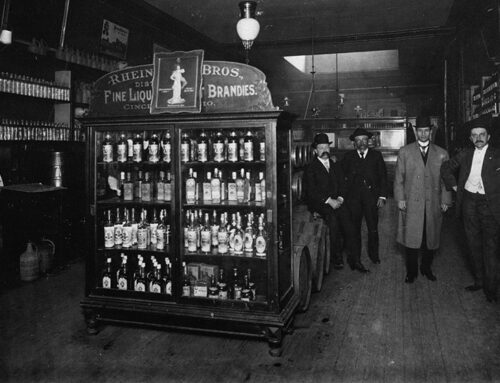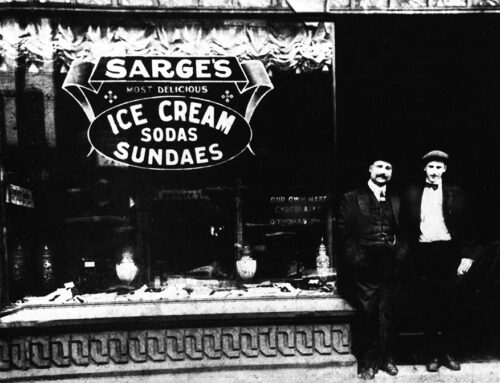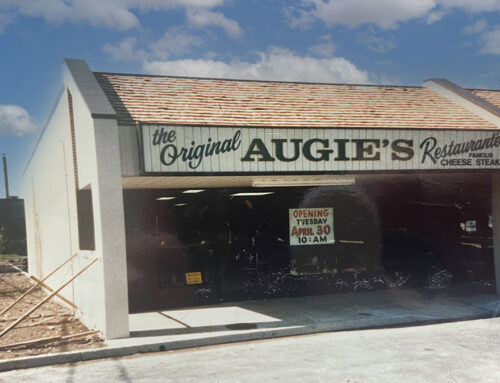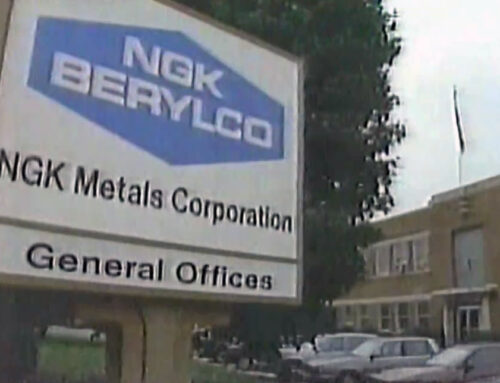Jackson Rope Company was one of Reading, Pennsylvania’s longest-standing manufacturers. Founded in 1829 by English ropemaker Thomas Jackson, the company grew from a small operation along the Schuylkill Canal into a nationally respected rope manufacturer. For 150 years, Jackson Rope adapted to industrial changes, natural disasters, and corporate transitions, remaining a cornerstone of Reading’s manufacturing history.
Early Years (1829-1850)
Thomas Jackson and his brother Edward emigrated from England, bringing their rope-making expertise to Reading, a key hub for canal transportation. Recognizing the demand for towlines for Schuylkill Canal barges, they established a ropewalk* along the canal, leasing land for just 50 cents a month from Samuel Griscom, the canal’s superintendent.
*Ropewalks were made so that workers could twist a worthwhile piece of rope before backing into an obstruction. Around 1910 machinery was purchased to eliminate the making of rope by hand and thereafter the rope walk wasn’t used.
Initially employing five workers, the business grew steadily, expanding to 15-20 employees by 1850. Jackson’s ropes became widely used by the Schuylkill Navigation Company and private boat owners, cementing the firm’s reputation.
In 1836, Jackson opened a general supply store near the canal to serve boatmen and their families while they waited at the locks. He purchased a 175-by-200-foot parcel near Schuylkill Canal Lock No. 48, at the foot of South Sixth Street. Given Lock 48’s role as a key toll station where boat traffic frequently stalled, the location was ideal. Over time, the area became known as “Jackson’s Lock” due to Jackson’s store, properties on Canal Street, and the nearby rope works.
Below: Jackson Lock and Store.


Disaster struck in 1850 when a devastating flood destroyed the factory. Instead of giving up, Jackson relocated the business to First Hockley Lane (near present-day 9th and Oley Streets), shifting from the southernmost to the northernmost part of the city. The rope-walk stood between Cedar and Ninth Streets, extending from Windsor to a point halfway between Greenwich and Oley.
At the new site, he expanded operations, constructing a two-story facility and continuing to produce ropes and twines by hand. As demand grew, he introduced machinery in 1862, extended the ropewalk to 1,450 feet, and increased the workforce to 25 employees.
In 1875, Thomas’s son, Henry H. Jackson, joined as a partner, leading to the company’s rebranding as Thomas Jackson & Son Company. Under their leadership, the business continued to thrive, adapting to evolving industrial needs. When Thomas Jackson Sr. passed away in 1878, Henry H. Jackson took full ownership, though the company name remained unchanged. Over the following decades, the company expanded its product line to include manila, sisal, and jute ropes, cordage, and packing yarns, supplying industries across the U.S.
Below: Dallin Aerial Photo (1930) showing Thomas Jackson & Son Co. and Elvino V. Smith Map (1913).


Overcoming Adversity (1878-1954)
Despite enduring significant challenges—including two major fires (1876 and 1923) and multiple economic downturns—Jackson Rope Co. continued to expand. By the mid-20th century, it employed 150 workers and produced enough twine annually to circle the Earth 20 times or reach the moon and back.
In the 1950s, a major city infrastructure project reshaped the area surrounding Jackson Rope Co. The City of Reading sought to extend Oley Street between 8th and 9th Streets, but a Jackson Rope building had blocked the route for more than 75 years. The project required relocating two railroad sidings and stabilizing the loose shale foundation. Despite the challenges, the city moved forward, and Oley Street officially opened in 1955.
Jackson Rope’s longevity was due in part to its ability to modernize. While early production relied on long ropewalks and hand-spun fiber, the company later introduced steam-driven cordage machinery and electrically powered high-speed twisters. Innovations led by Edward H. Jackson, the founder’s great-grandson, further improved efficiency.
Below: This newspaper clipping from May 2, 1941, offers the only known view of the 700-foot-long Jackson Rope Works ropewalk, which likely existed in some form since 1851. Described as “scarcely taller than a man and only a few feet wide,” it had long been concealed by surrounding buildings. The photo, taken from the roof of a house on Douglass Street looking south, shows the Douglass Street Bridge in the foreground.


Corporate Transitions & Closure (1954-1979)
By its 125th anniversary in 1954, Jackson Rope Co. was the oldest continuously operating manufacturer in Reading. However, shifts in the industrial landscape led to several ownership changes:
- 1966 – Acquired by Earl M. Anderson Jr. & Associates of New York
- 1968 – Purchased by Automatic Steel Products, Inc., of New York City, which later became Aspro, Inc.
- 1976 – Sold to Tubbs Cordage Co. of San Francisco, continuing as a division under the Jackson Rope name.
Below: Newspaper clipping of the Jackson Rope Co. building at the Southwest corner of 9th and Oley Streets.

In 1979, after 150 years in Reading, Jackson Rope Company shut down its local operations. The closure was driven by efficiency concerns—its split-site facility required transporting materials across Oley Street, while a new Austin, Texas plant offered a streamlined, single-story production layout.
With the move, 65 employees lost their jobs, and Reading’s oldest manufacturer closed its doors. The historic 9th and Oley Streets property was put up for sale, marking the end of a company that had shaped the city’s industrial heritage for nearly a century and a half.
Below: Former manufacturing facility for the Jackson Rope Co., 810 Windsor Street.







Leave A Comment